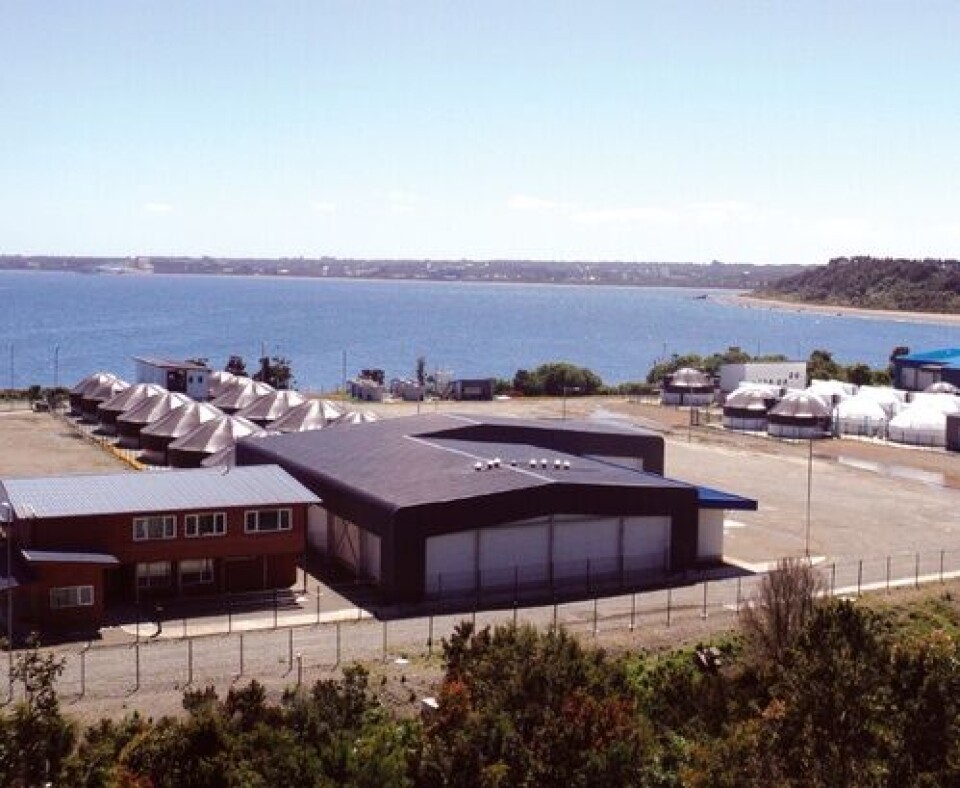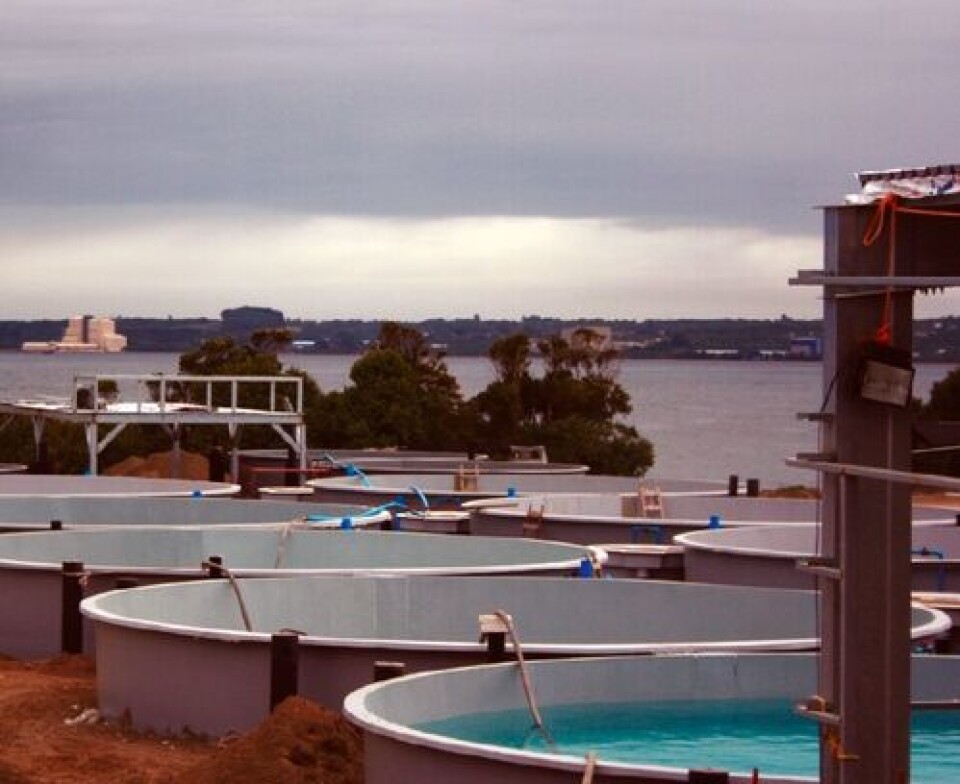Smolt year round
By Gustav-Erik Blaalid gustav@kyst.no

About half an hour’s drive southwest of Puerto Montt we find Sealand Aquaculture. The company has in recent years been constantly constructing the facility, and the capacity has been expanded from 6 million to 12 million smolts. All based on an advanced recirculation system, which reduces water consumption to a minimum. But what separates Sealand from other advanced smolt producers is the way they organize production and sales. Smolt production by contract - We have few customers, actually only three, says Director Oscar Garate and lists AcuiNova, Multiexport and Blumar. He explains the model in a simple way. - Customers provide us with eggs, feed and vaccines. We take care of the production and supply them with seaready smolt. On the surface it seems easy, but Oscar adds that the basis is a framework of agreements and contracts that bind both customers and Sealand. Among other things is that all eggs to be included in the facility have to be approved by the external actors so that the risk of infection and disease will be minimal. - Customers are bound by five-year contracts, which provide some long-term perspective for us as a manufacturer, and for the customers in terms of their way to organize food fish production, says Oscar Garate. He is no stranger to the idea of using the experience from Sealand as a model elsewhere in the world. - Yes, why not in Norway? We have had inquiries from Norway, where the actors are interested to look into this model, he says.

Increasing yield The production of 12 million smolts at Sealand is based on 22 million eggs laid for hatching. The eggs come mainly from stocks developed by Land Catch, Stofnfiskur and Mowi, and Aqua Gen. All the eggs originates from broodstocks kept in fres water 100% of their lives. - The reason that only about half of the eggs survive until delivery is because we sort with an iron hand, explains Oscar Garate. 25-30% of the juveniles are simply liquidated so that only the best individuals reach the smolt stage. He explains that in 2009, the yield per sea launched smolt was 2 kilo for the industry overall. In 2012 this figure had increased to 4 kilo. This improvement says a lot about the quality of juvenile fish, but it also says a lot about other efforts made by the industry to implement regulations to prevent the fish from catching diseases. Oscar is very pleased by the fact that the yield per smolt over the past two years has remained high despite a rapid increase in production from 2009 when the industry hit rock bottom after the ISA crisis. When the ISA crisis hit Chile’s aquaculture industry with full force in 2007, the average loss was between 40-50 per cent. For many players the loss was substantially higher. The crisis led to a series of actions taken by both government and industry. On short sight this has led to substantial improvements, but in a longer perspective there is a lot more to do. Among several regulations, Chile introduced production zones with strict control of all movement of fish between the zones. The question of maximum allowed amount of volume per production unit and per zone has been another controversial issue. Due to the new regulations the total production is now back at pre-crisis level. But there are many critical voices claiming that a crisis could happen again if the industry and the authorities fail to implement and enforce the regulations. Sealand and Oscar Garate comfort themselves with the fact that they have very low mortalities. Major investments The cost of recent development of Sealand Aquaculture was 23 million USD (approx. 130 million NOK). Common for the entire facility is that Sealand has chosen to use only one supplier for all technical installations. - We chose Akva group and gave them the main project. We asked them to design the facility. They did, and we are very satisfied with the results, says Garate. The facility reduced water consumption by 98.4 per cent through recycling compared with a traditional smolt plant. - A production of the same amount as we have here but in a traditional plant would have consumed 14 million cubic meters of water per hour, while we use only 214 cubic meters per hour, explains Oscar Garate. Downturn for recycling The aforementioned crisis that hit like a fist in 2007, also had a major impact on the many recycling projects that were at the design stage. - In 2008 there were around 25 recycling projects on the chart. The following year more than 20 of them were abandoned. In 2012, we see a renewed interest for recycling, but only two projects are under way or completed in 2012, says Oscar Garate. He believes, however, that several recycling plants will be built in the coming years. The pace will depend on the availability of capital, which is a very limiting factor in today’s salmon industry in Chile. Banks are reserved, and the capital markets in general are hesitant. For salmonids fresh water production there are around 150 hatceries in operations. Approximate 20-25 of these are producing smolt. Over 40 percent of the total number of produced smolt, are produced in recycling systems, where Sealand’s share is about 9 percent of the total.






















































